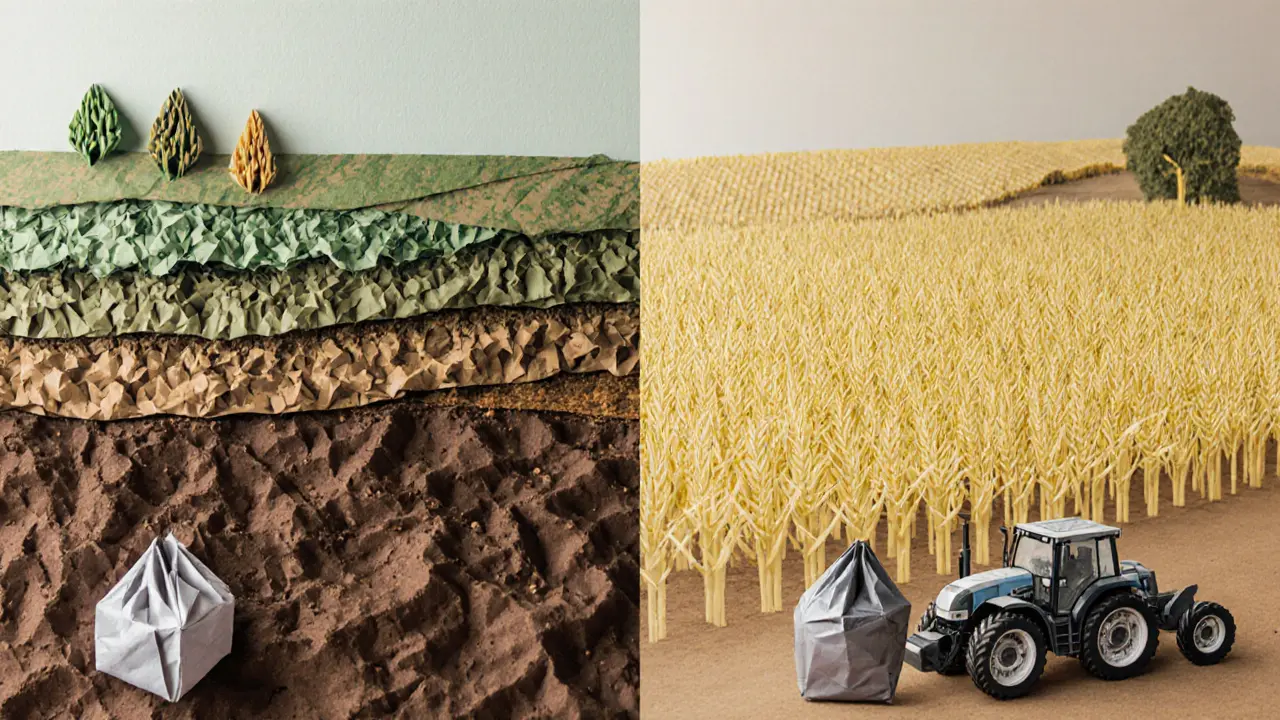Agriculture Overview
When working with Agriculture, the practice of cultivating soil, raising crops, and managing livestock for food, fiber, and other products. Also known as farming, it forms the backbone of economies and feeds billions. In the crypto‑powered world of DeFi, Yield Farming, allocating digital assets to earn rewards in liquidity pools mirrors traditional crop cycles, but the underlying principles still echo real‑world agriculture.
Sustainable Agriculture, farming methods that aim to preserve ecosystem health while maintaining productivity is becoming the yardstick for long‑term success. It requires Precision Farming, using sensors, GPS, and data analytics to apply inputs only where needed, which cuts waste and boosts yields. At the same time, Land Sparing, the strategy of setting aside high‑value habitats while intensifying production elsewhere influences how sustainable practices are rolled out across large regions.
Key Concepts in Modern Farming
One of the biggest talking points today is the yield gap—the difference between potential crop output under optimal conditions and what farmers actually achieve. Closing that gap often means combining sustainable principles with high‑tech tools. For example, a farmer might use drone‑based NDVI imaging to spot water stress early, then apply fertilizer only to those patches. That’s precision in action, and it directly supports the goals of sustainable agriculture.
Another trade‑off that shows up in both crypto and real farms is the balance between short‑term profit and long‑term soil health. Unsustainable yield farming in DeFi can drain liquidity pools quickly, just as over‑application of chemicals can deplete soil nutrients. Both scenarios illustrate why hybrid models—where you mix high‑yield tactics with regenerative practices—are gaining traction.
When you look at the broader picture, agriculture encompasses a wide range of activities: from planting and harvesting to market logistics and risk management. Each step can benefit from data‑driven insights, whether you’re tracking BTC price swings that affect commodity funding or monitoring soil moisture sensors in a remote field.
Stakeholders across the spectrum—farm owners, investors, policymakers, and DeFi developers—need a shared language. That’s why terms like “yield gap,” “land sparing,” and “precision farming” are becoming common in both green tech conferences and blockchain meetups. Understanding these entities and how they interrelate helps you make smarter decisions, whether you’re allocating capital in a liquidity pool or choosing a cover crop for erosion control.
Practically speaking, you’ll find tools that translate satellite data into actionable field maps, and smart contracts that automate reward distribution based on performance metrics. Both aim to reduce human error and increase transparency. In this way, technology serves the core mission of agriculture: to produce more with less impact.
Below you’ll discover a curated set of articles that dive deeper into each of these topics. We cover the nuances of sustainable vs unsustainable yield farming, explore how precision techniques shrink the yield gap, and explain the role of land sparing in modern land‑use planning. Each piece offers concrete examples, data points, and actionable takeaways you can apply right away.
Ready to see how these ideas play out in real‑world scenarios and at the intersection of crypto and farming? Scroll down to explore the full collection of guides and analyses that will help you navigate the evolving landscape of agriculture.

